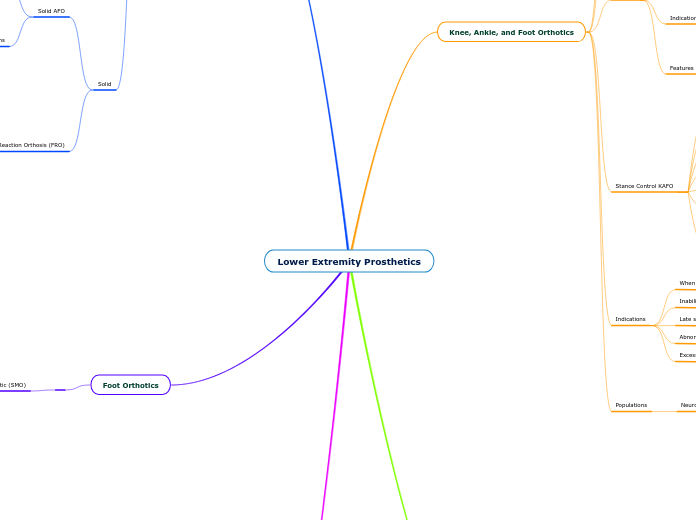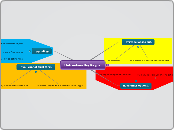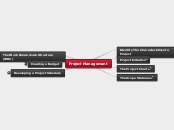Lower Extremity Prosthetics
Knee Orthotics
FNMES
history of phlebitis
defibrillators
healing fracture
metal implants
pacemakers
PD
MS
Stroke
Intact common peroneal nerve
Dorsiflexion
Conventional KO
Malalignment
Genu varum
Genu valgum
Genu recurvatum
Insufficiency of lesser devices
Protection from loading/stress
Control hypermobility
Preventative/corrective tx
Foot Orthotics
Ankle and Foot Orthotics
Solid
Floor Reaction Orthosis (FRO)
Cruciate ligament insufficiency
Recurvatum during stance
Post polio syndrome
Children with CP
Restriction of tibia rolling forward over foot
Hold ankle in slight plantarflexion
Solid AFO
Limitations
Sit to stand
Uneven Surfaces
Stairs
Preposition foot for initial contact
Assist swing foot clearance
Holds ankle in fixed position
Dynamic
Metal (single or double) Upright
Indication
Transition from IC to LR
Edema/swelling
Assist foot clearance
BICAAL (locking mechanism)
Posterior Leaf Spring AFO
Contraindications
moderate to severe hypertonicity
LMN flaccid paralysis of DFs
impaired motor control
Dorsiflexion weakness
Allow ankle rocker function
Preposition foot for IC
Assist limb clearance
Hinged thermoplastic AFO
Neuro
Children w/ CP
Post-stroke
MSK
Ankle protection
Weak ankle mms
Knee hyperextension
Actions
Reduce energy expenditure of walking
PF/DF stop
Hip, Knee, Ankle, and Foot Orthotics
Reciprocal Gait Orthosis
traumatic SCI
hip joint motion for swing phase
rigid stability for stance
Conventional HKAFO
Progressive NM disorders
Myelomeningocele
Action
Extension for upright standing
Restore functional mobility
Knee, Ankle, and Foot Orthotics
Populations
Neurologic
Post-polio
SCI
TBI
CVA
Excessive hypertonicity that overpowers external moments
Abnormal knee varus or valgus
Late stance phase excessive genu recurvatum
Inability to control early stance phase knee flexion
When AFO cannot provide gait or standing stability
Stance Control KAFO
Assists knee flexion
Allows flexion during swing phase
Prevents knee flexion during stance phase
Harder to adjust
Can be hot
Lightweight
Better cosmoses
Interchangability
Locking
Features
Control knee hyperextension
Drop lock knee joints
Bail locking
Single axis joints
Control of knee buckling
Conventional Non-Locking
Indications
Posterior offset joints
Control of mild/moderate varus/valgus angulations
Reduction of knee hyperextension
Strong
Durable
Easy to adjust
Heavier
Less cosmetic
Must be attached to shoe
Components
Superstructure
Knee Control
Ankle Control
Footplate
Shoe









